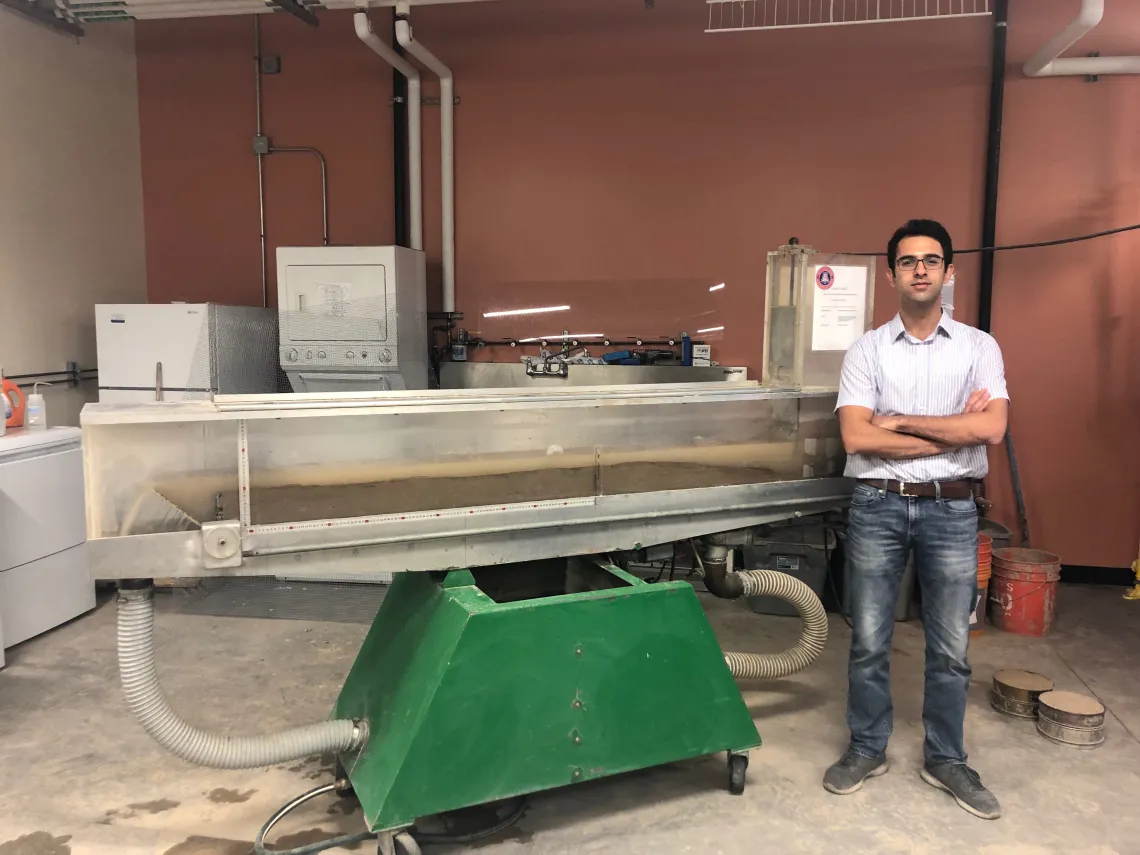WEST Study Investigates Pathogen Movement in Irrigation Waterways

Erfan Tousi with sediment flume at WEST Center.
The WEST Center has a number of important research projects underway, including one using a sediment flume to measure how viruses and bacteria move from sediment to water. Dr. Charles Gerba is the Principal Investigator leading this project which began in Fall 2018 and will continue until 2020. Funded by the Center for Produce Safety, the project was motivated by the E. coli contamination of food crops in Yuma in 2018 as well as prior events. Dr. Gerba, along with PhD student Erfan Tousi, hope to understand how viruses and bacteria travel through irrigation canals in Yuma and elsewhere in order to develop strategies to reduce contamination of food crops from irrigation water in the future. Of special importance is how results might provide guidance to anticipate virus and bacteria contamination in the case of a larger-scale event (i.e. surge or flood) to assist with the prevention of food-borne illness.
The study is currently looking at two pathogenic virus surrogates; ФX-174 and MS-2, and will begin testing with E. coli and Listeria next year. Each virus is added to three different sediments—sand, clay, and sandy loam—and tested in a sediment flume, which allows the researchers to push water through the sediment at different velocities. To quantify how fluid interacts with the viruses, Gerba, Tousi, and others measure how many viruses are suspended in the water after moving through the sediment. They hypothesize that as velocity increases, the number of suspended viruses/bacteria will increase.



